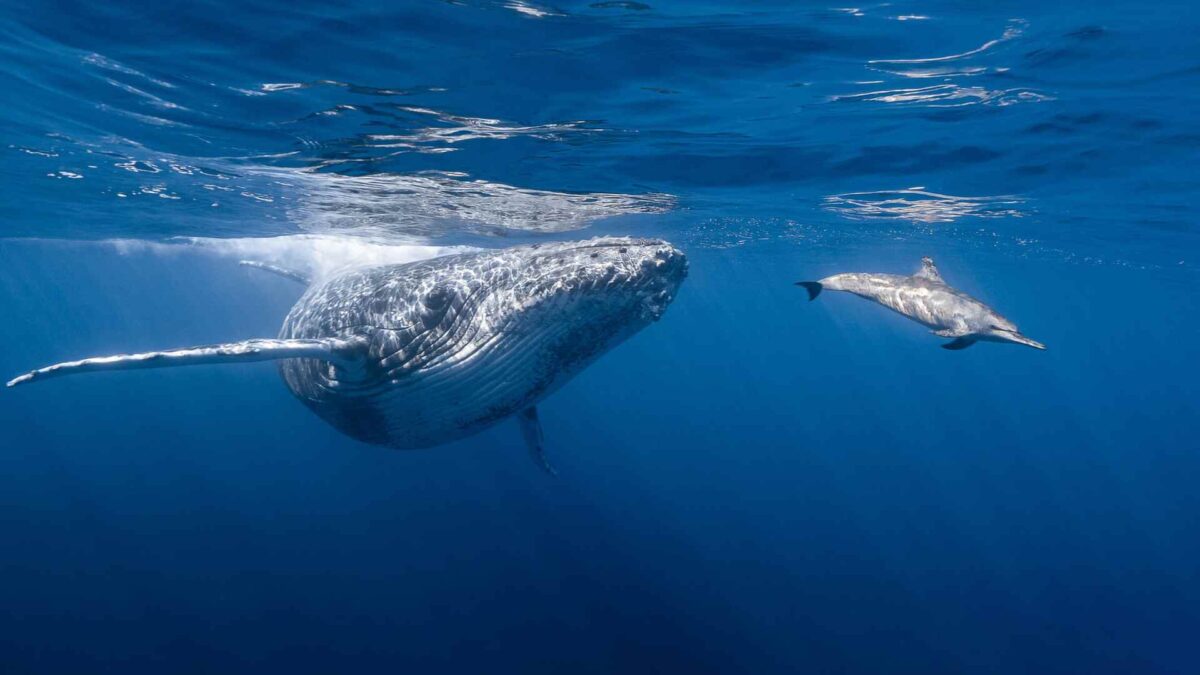
Study Finds Whales Often Welcome Dolphin Company

A new international study has found that some whales and dolphins may genuinely enjoy each other’s company rather than simply tolerate one another at sea.
The research, led by Dr Olaf Meynecke of Griffith University’s Whales & Climate Program in Australia, examined 199 separate encounters between baleen whales and dolphins in 17 locations around the world. The team drew on hundreds of photographs and videos taken by tourists, researchers and members of the public.
The study, published in Discover Animals, looked at 19 species and found that about a quarter of these encounters could be classed as mutual interactions.
“In particular for humpback whales, one third of the events showed positive responses towards the dolphins,” said Dr Meynecke. “They rolled from side to side, displayed their bellies and engaged in other behaviours linked to courtship or friendly socialising. The majority of encounters showed no avoidance behaviour.”
Dolphins are often portrayed as harassing whales, but the footage told a more nuanced story. In many cases, dolphins swam close to the whale’s head or rostrum in a fashion similar to bow riding, which may be both energy-efficient and a form of play.
In total, 425 baleen whales from six species were documented, with humpbacks making up 68 per cent. An estimated 1,570 dolphins were observed, dominated by bottlenose dolphins.
Calves were involved in a significant number of interactions, including 21 occasions where both whale and dolphin calves were present. Different whale species responded in different ways, from pectoral fin movements to rolling and pectoral slaps. Aggressive responses were relatively rare.
Two suction-cup camera videos attached to humpbacks captured bottlenose dolphins following them to the ocean floor, continuing close contact and possible play.
Co-author Olivia Crawley said the work gave scientists the chance to examine an age-old curiosity. “When you are out on the water you often see whales and dolphins together and you wonder why. It was intriguing to document these patterns up close.”
Dr Meynecke said such behavioural studies were essential to understanding marine ecosystems. “They reveal the complexity of marine social life and the ways in which different species interact.”
The paper, Assessing social behaviour between baleen whales (Mysticeti) and dolphins (Delphinidae), is now available in Discover Animals.
Share this WeathÉire story:







